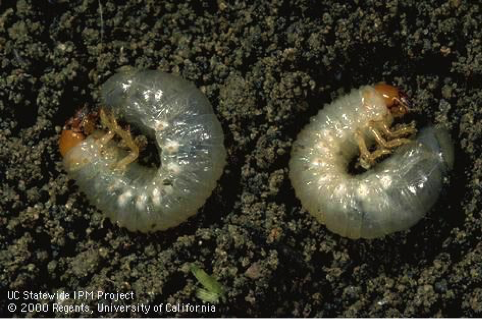
Insect pests, though actually quite rare in well-managed lawns and turf, can sometimes jeopardize a flawless appearance, potentially sending people running to their local nursery or garden center for help.
The recently revised UC IPM Pest Note: Lawn Insects can prepare you with answers to keep lawns pest-free and BBQ ready this summer. This resource contains a wealth of information about lawn insect prevention and management, including coverage of most insecticides for use in residential lawns and an updated treatment table with many new IPM-compatible active ingredients.
Early Prevention and Monitoring
Often times, damage due to lawn insect pests only becomes apparent during late summer and fall, when low soil moisture and heat stress take a visible toll on areas with damaged roots or tattered blades. Unfortunately, it is difficult, or even impossible, to reverse the damage at this point since pests may already be gone or dormant and because grasses are no longer vigorously growing. For example, the larvae of masked chafers (the most common and most damaging of the ‘white grub' species, having only one generation per year in California (Figure 1)) have largely stopped eating roots and stopped growing in size when the damage they cause is most observable (autumn). The most effective treatments should have been made in June or July, when grubs were small and damage had not yet appeared. Considering such delays in damage, remember that prevention and monitoring are the most important management tactics for lawn pests and that you may have to plan ahead for the future if your goal is a pest-free lawn.
In fact, pest management for lawns and turf areas should begin during design and installation of the site, with species selection, proper grading and drainage, appropriate irrigation systems, and a maintenance plan. Choosing the appropriate turf species for the site by considering regional climate and water availability is the single best way to reduce overall stress and to ensure longevity and resiliency of the grasses planted.
UC IPM's online resources such as the UC Guide to Healthy Lawns can help you choose appropriate turf species based on tolerance to key stressors such as temperature, salinity, drought, and foot traffic.